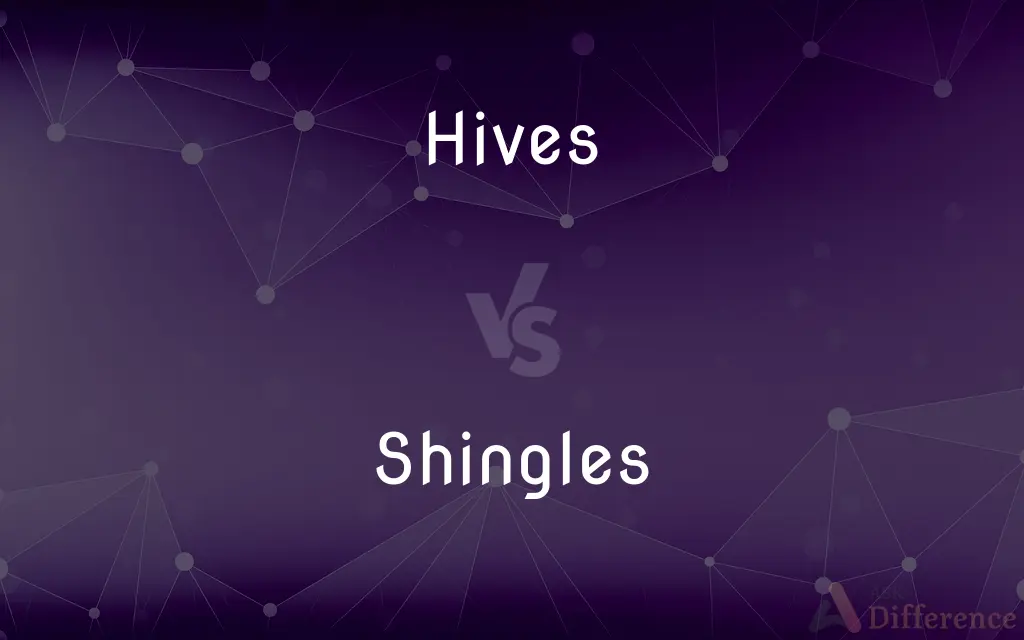Difference Between Hives And Shingles

Hives and shingles are two distinct skin conditions that often cause confusion due to their similar appearances, but they have different causes, symptoms, and treatments. Understanding the differences between these conditions is crucial for proper diagnosis and management.
To begin with, hives, also known as urticaria, are characterized by the appearance of itchy, raised welts on the skin. These welts can vary in size, shape, and color, and they often change shape or move around, disappearing and reappearing in different areas of the body. Hives are usually triggered by an allergic reaction to food, medicine, or another substance, and they can also be caused by infections, insect bites, or environmental factors. The symptoms of hives typically include intense itching, redness, and swelling, and they can be acute, lasting less than six weeks, or chronic, lasting more than six weeks.
On the other hand, shingles, also known as herpes zoster, is a viral infection caused by the varicella-zoster virus, which is the same virus that causes chickenpox. After a person recovers from chickenpox, the virus can remain dormant in the body and reactivate years later, causing shingles. Shingles is characterized by a painful, blistering rash that usually appears on one side of the body, often on the torso or face. The symptoms of shingles include burning or shooting pain, redness, and swelling, as well as a rash that progresses from small, fluid-filled blisters to crusted, healed lesions. Shingles can also cause fever, headache, and fatigue, and it can lead to complications, such as postherpetic neuralgia, which is a persistent, debilitating pain that can last for months or even years after the rash has healed.
One of the main differences between hives and shingles is the duration of the symptoms. Hives can last from a few hours to several weeks, while shingles typically lasts around two to six weeks. Another difference is the appearance of the rash. Hives are usually itchy, raised welts that can change shape or move around, while shingles is a painful, blistering rash that typically appears on one side of the body. Additionally, shingles is usually accompanied by a burning or shooting pain, which is not typically seen in hives.
In terms of treatment, hives are usually managed with antihistamines, corticosteroids, or other medications that relieve itching and reduce inflammation. Shingles, on the other hand, is treated with antiviral medications, such as acyclovir or valacyclovir, which can help reduce the severity and duration of the symptoms. Pain relief medications, such as acetaminophen or ibuprofen, can also be used to manage the pain associated with shingles.
To illustrate the differences between hives and shingles, consider the following example:
A 35-year-old woman develops a rash on her face and torso after eating shellfish. The rash is itchy, raised, and changes shape over the course of several hours. She is diagnosed with acute hives and treated with antihistamines and corticosteroids. In contrast, a 60-year-old man develops a painful, blistering rash on one side of his torso after experiencing several days of burning pain. He is diagnosed with shingles and treated with antiviral medications and pain relief medications.
What is the main difference between hives and shingles?
+The main difference between hives and shingles is the cause and appearance of the rash. Hives are usually triggered by an allergic reaction and appear as itchy, raised welts, while shingles is a viral infection caused by the varicella-zoster virus and appears as a painful, blistering rash.
Can hives and shingles be prevented?
+While hives can be prevented by avoiding triggers, such as certain foods or medications, shingles can be prevented with vaccination. The CDC recommends that adults aged 50 and older receive the shingles vaccine to reduce the risk of developing shingles.
How are hives and shingles treated?
+Hives are usually managed with antihistamines, corticosteroids, or other medications that relieve itching and reduce inflammation. Shingles is treated with antiviral medications, such as acyclovir or valacyclovir, which can help reduce the severity and duration of the symptoms.
In conclusion, while hives and shingles are two distinct skin conditions, they can be confused due to their similar appearances. Understanding the differences between these conditions is crucial for proper diagnosis and management. By recognizing the unique characteristics of each condition, individuals can seek appropriate treatment and prevent complications.
